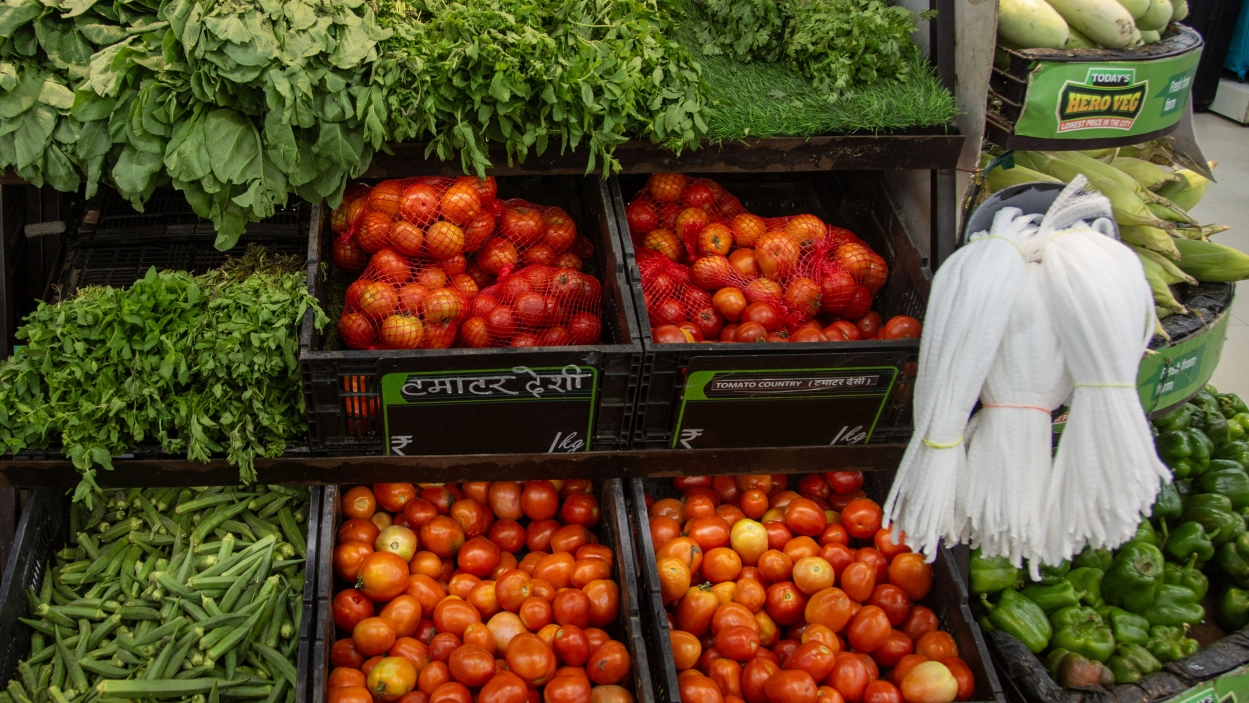VOLATILITY IN TOMATO PRICES

Copyright infringement not intended
Context: Tomato is a staple vegetable widely consumed across India and plays a significant role in the country's agricultural economy. However, the prices of tomatoes have been subject to considerable fluctuations over the years, impacting both farmers and consumers.
Details
- Tomato is one of the most widely consumed vegetables in India, with an annual production of about 20 million tonnes. It is also a highly perishable commodity, with a shelf life of only a few days.
- Tomato prices are subject to seasonal fluctuations, depending on the supply and demand situation in different regions of the country. However, in recent times, tomato prices have witnessed extreme volatility, reaching as high as ₹250 per kg in some markets. This has caused hardship to both consumers and farmers and has implications for food inflation and economic stability.
Several factors contribute to the volatility in tomato prices
- The main reason for the spike in tomato prices is the mismatch between supply and demand. The supply of tomatoes has been affected by several factors, such as;
Extreme weather conditions
- The heatwaves and high temperatures in April and May along with delayed monsoon showers in southern India and Maharashtra led to pest attacks and crop damage in tomato fields. This reduced the yield and quality of tomatoes and also delayed the arrival of the new crop in the market.
Low commercial realisation
- The farmers who had grown tomatoes in the previous season had faced low prices ranging from ₹6 to ₹11 per kg between December 2022 and April 2023. This discouraged them from sowing more tomatoes in the current season, resulting in lower acreage and production.
Transport and logistics issues
- The movement of tomatoes from surplus to deficit regions has been hampered by the lack of adequate transport and storage facilities. The high fuel prices and taxes have also increased transportation costs, which are passed on to the consumers
Hoarding and speculation
- Some traders and middlemen have taken advantage of the supply-demand gap and have hoarded or artificially inflated the prices of tomatoes in the wholesale and retail markets. They have also created a perception of scarcity among consumers, leading to panic buying and further price rises.
Impact
Consumers
- Consumers have been hit hard by the soaring tomato prices, as they have to spend more on this essential vegetable or reduce their consumption. This affects their nutrition and health, especially for the poor and vulnerable sections of society. Moreover, tomato is used as an ingredient in many dishes and cuisines, so its high price also affects the food habits and preferences of the consumers.
Farmers
- The farmers who grow tomatoes have also suffered due to price volatility, as they have not been able to get remunerative prices for their produce. They have also faced losses due to crop damage, wastage, and distress sale. The uncertainty and risk involved in tomato cultivation have reduced their income and livelihood security, and have discouraged them from investing in improved seeds, inputs, and technologies.
Economy
- The volatility in tomato prices has also affected the economy at large, as it has contributed to food inflation and macroeconomic instability. Tomato is an important component of the Consumer Price Index (CPI), which measures the changes in the cost of living for households.
- A rise in tomato prices increases CPI inflation, which affects the purchasing power and savings of the people.
- It also influences the monetary policy decisions of the Reserve Bank of India (RBI), which aims to maintain price stability and growth. The RBI has highlighted that the volatility of tomato prices has historically spillover effects on other commodities and overall inflation levels in the country.
Challenges
Data gaps
- There is a lack of reliable and timely data on tomato production, consumption, trade, prices, and stocks at different levels. This hampers effective planning, forecasting, monitoring, and intervention by government agencies and market players.
Market inefficiencies
- There is a lack of efficient and transparent markets for tomatoes, where farmers can get fair prices for their produce and consumers can get quality products at reasonable rates. There are many intermediaries involved in the supply chain, who charge high commissions and margins, creating information asymmetry and market distortion.
Infrastructure bottlenecks
- There is a lack of adequate infrastructure for the transport, storage, processing, and marketing of tomatoes, which leads to high post-harvest losses, wastage, spoilage, and adulteration. There is also a lack of cold chain facilities, which can extend the shelf life and preserve the quality of tomatoes.
Policy gaps
- There is a lack of coherent and consistent policies and regulations for tomato production, trade, and price stabilization. There are also issues of coordination and implementation among various ministries, departments, agencies, and stakeholders involved in the tomato sector.
The volatility in prices can be addressed by adopting the following measures:
Strengthening data collection and dissemination
- There is a need to improve the data collection and dissemination systems for tomato production, consumption, trade, prices, and stocks at different levels. This can be done by using modern technologies such as satellite imagery, remote sensing, artificial intelligence, and big data analytics. This can help in better planning, forecasting, monitoring, and intervention by government agencies and market players.
Promoting efficient and transparent markets
- There is a need to promote efficient and transparent markets for tomatoes, where farmers can get fair prices for their produce and consumers can get quality products at reasonable rates. This can be done by reducing the role of intermediaries, enhancing the direct linkages between farmers and consumers, encouraging online platforms and e-commerce, and ensuring compliance with quality standards and norms.
Developing infrastructure and logistics
- There is a need to develop infrastructure and logistics for the transport, storage, processing, and marketing of tomatoes, which can reduce post-harvest losses, wastage, spoilage, and adulteration. This can be done by investing in cold chain facilities, processing units, warehouses, market yards, and transport networks. This can also create value addition and employment opportunities in the tomato sector.
Formulating coherent and consistent policies and regulations
- There is a need to formulate coherent and consistent policies and regulations for tomato production, trade, and price stabilization. This can be done by coordinating and harmonizing the roles and responsibilities of various ministries, departments, agencies, and stakeholders involved in the tomato sector. This can also involve creating buffer stocks, providing minimum support prices, regulating exports and imports, subsidizing inputs and outputs, and implementing crop insurance schemes.
Conclusion
- Addressing the volatility in tomato prices requires a coordinated effort and collaboration among various stakeholders. By adopting a holistic approach, the agricultural sector can achieve more stable and equitable tomato prices, benefiting both farmers and consumers alike.
Must-Read Articles:
|
PRACTICE QUESTION Q. What are the factors contributing to agricultural goods inflation, and what are its potential impacts on the economy? Identify the challenges in managing agricultural goods inflation and suggest the way forward to address this issue effectively. |





1.png)
